Preparing for an interview

Download Easy Read
1. Overview
This guide provides information on:
- conducting research on the organisation that you have applied to work for
- preparing questions to ask the interviewer
- preparing and practising responses to common interview questions
- planning for interview logistics
- reasonable adjustments for your interview.
2. Introduction
If you have applied for a job and your application is successful, the next step in the recruitment process is often an interview.
The purpose of an interview is multi-faceted. It is an opportunity for your potential manager, and possibly a broader panel from the organisation, to meet you, and hear about your skills and experience.
Sometimes an interview may also incorporate an assessment task that aligns with the skills required for the role.
3. Research the organisation
Before your interview it is important to take some time to learn as much as you can about the organisation you have applied to work for.
To find out about the business or organisation, a good place to start is their website. An organisation’s website will generally provide you with information about its:
- Vision, mission and purpose
This will help you understand their values and the larger goals they are seeking to achieve.
- Structure
This will help you understand how the organisation operates, where your role fits in, and give you a sense of the size of the organisation.
- History and recent projects
This will help you understand the organisation’s background and what they are focused on right now.
It is helpful to re-read the job description and selection criteria prior to the interview so that you are able to demonstrate the skills required for the role in your answers to the interview questions.
4. Preparing and practising responses
Every interview will be different, but it is helpful to prepare and practise responses to common interview questions prior to the interview.
Examples of some common interview questions include:
- Tell me a bit about yourself and your professional skillset.
- Why are you interested in working at this organisation?
- Tell me about a time when you had to manage competing priorities. How did you do it?
- Describe a situation where you had to handle a problem. What did you do?
- You are given a task that you have never done before. What would you do?
When responding to a question, take a moment to think through your answer. If possible, it can also be helpful to make a note of the question, particularly if it has multiple parts.
When preparing and practising for situational questions (‘describe a time or situation when …’), some people find it helpful to structure their response using the STAR method.
STAR stands for Situation, Task, Action, Results[1]
- Describe the situation: this is the context.
- Identify the task you had to complete: this is what you had to do.
- Describe your actions: this is what you did.
- Identify the results: these are the outcomes from your actions.
5. Questions for the interviewer
There is generally time at the end of the interview for you to ask questions. Asking questions will demonstrate to the interviewer that you are interested and engaged in the work they do.
You may wish to ask questions about:
- the organisation
- the role
- the team the role sits within
- the organisation’s commitment to inclusion and accessibility
- when you are likely to hear back about the outcome of the recruitment process.
If you have questions related to your disability or reasonable adjustments, you can ask these questions during your interview. However, you should not feel compelled to do so.
If you would like to know more about sharing information about your disability, please see the IncludeAbility guide on Identifying as a person with disability in the workplace which covers issues such as:
- whether a person has an obligation to share information about their disability with an employer or potential employer
- why a person may not want to share information about their disability with their employer or potential employer
- why a person may want to share information about their disability with their employer or potential employer
- why an employer may ask employees about disability
- the questions an employer can and cannot ask about a person’s disability
- requesting reasonable adjustments in the workplace.
6. Planning for interview logistics
6.1 In-person interviews
If the interview is in-person, confirm the location with the hiring manager in writing. If you have particular requirements regarding physical accessibility (for example, access to ramps or lifts if you are a wheelchair user), you should confirm that the location is accessible.
If the interview is taking place somewhere unfamiliar it is helpful to:
- Look up the location or office on Google Maps: this can give you an idea of what the building looks like.
- Plan how you will get there: look up train, bus, ferry, or light rail times. If you are driving, research how long it takes to get there, and ask if parking is available and where.
You should plan to arrive about 20 minutes before your interview. That will provide you with some flexibility in case your public transport is running late or you have trouble parking. If you are early, you can use the time to read over your notes and prepare.
You can also take a support person to your interview. A support person might be a friend, family member or support worker. They can come into the interview with you, or they can wait outside. It is always best to let the interviewer know that you will be bringing a support person with you before the interview.
6.2 Online or virtual interviews
If the interview is taking place online or virtually via video conferencing (for example, Zoom), consider the following:
- Are you familiar with the program or platform being used for the interview? If you have not used the program before, download it onto your device prior to the interview.
- Have you checked that the link to the interview invitation works?
- Do you have a working computer, tablet, or phone to join the interview from? Make sure your device is fully charged or plugged into power for the interview.
- Do you have a quiet place, with an appropriate background and enough lighting for your interview?
Allow at least 30 minutes before the interview starts to check your technology and background.
7. Reasonable adjustments for your interview
Once you know when, where and how your interview will be conducted, you can consider whether you require any reasonable adjustments to allow you to participate to the best of your abilities.
Reasonable adjustments for an interview may include:
- live captioning if the interview is online
- an AUSLAN interpreter
- the presence of a support person
- additional time.
Once you become confident about the adjustments that you require, you may wish to mention these at the time you are offered the interview. Alternatively, you can send an email or arrange a follow-up call to discuss any adjustments for the interview.
If you would like more information about how people with disability can be supported successfully through recruitment processes by employers, please see the IncludeAbility guide on Attracting and recruiting people with disability to your organisation.
8. Resources
For more information on preparing for an interview see:
Endnotes
[1] Indeed, How to use the STAR interview response technique (Web Page, February 2021).
[2] Disability Discrimination Act 1992 (Cth) ss 5, 11.
This guide is part of a suite of resources developed by the Australian Human Rights Commission as part of IncludeAbility to assist:
- employers provide meaningful job opportunities to people with disability
- people with disability navigate barriers to employment.
Further resources are available at www.IncludeAbility.gov.au.


